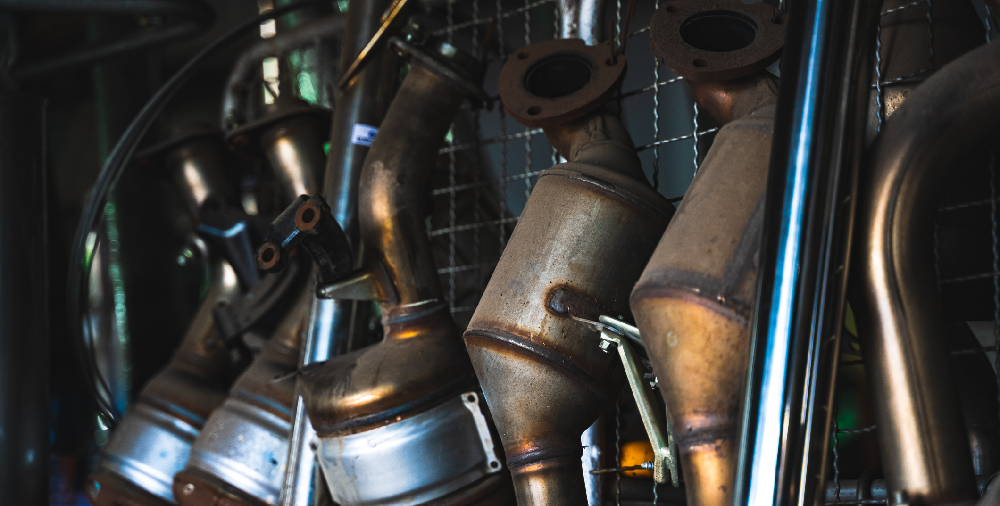Apart from servicing vehicles, we at Performance Muffler are happy to educate drivers more and more on their vehicle. Specifically, we think it’s crucial to be thoroughly aware of your exhaust system. It’s an integral part to your vehicle, and it can be a little more difficult to regularly keep up with it, unlike your vehicle’s exterior. That’s why in this blog we’re going to break down the 3 components of the exhaust system and why they’re important.
What Makes Up the Exhaust System?
While there are a handful of parts to the exhaust system, there are only 3 major components. These 3 major components of the exhaust are the exhaust manifold, catalytic converter, and muffler. Of course, this is a standard factory exhaust system, straight from the manufacturer. On top of the major components, the exhaust system also has a flex pipe, oxygen sensors, gaskets and clamps, and resonator pipe accessories.
What Is the Purpose of the Exhaust System?
Before diving into each component individually, let’s review what your exhaust system does overall. The exhaust system controls noise, carries gasses away from the front of the vehicle, enhances performance, and improves fuel economy. It’s an intricate system that requires several parts working in unison for the vehicle’s optimal success. But when everything’s running correctly, you’ll notice it on your ride.
Exhaust Manifold: The Basics
The exhaust manifold is the first section of the exhaust system. Its purpose is to be the “lungs” of the engine. It inhales gasses generated during combustion and sends them to the catalytic converter.
Catalytic Converter: The Basics
The next step in the exhaust system process is the catalytic converter. This component cleans the exhaust emissions, allowing them to be safe to emit into the environment. Because catalytic converters are so crucial, it’s a bonus to know they’re built to last your vehicle’s entire lifetime. Exhaust fumes continue to travel from the catalytic converter down towards the end of the exhaust system.
Muffler: The Basics
After the combustion process and fumes are converted to less harmful gasses, they then travel through the exhaust piping and into the muffler. Often this is the most known element to the exhaust system. People typically understand how a muffler reduces noise. It’s located near the back of the vehicle and under the body.
Common Exhaust Problems
Now that you know a little more about your vehicle’s exhaust, let’s review frequent problems vehicle owners run into with their exhaust system. If you’re having exhaust system problems, you’re likely dealing with a bad catalytic converter or even muffler trouble. They can encounter the most pressure and temperature changes, allowing them to wear more quickly.
Your entire exhaust system won’t fail all at once. Small problems accrue, resulting in a domino effect with issues. So, there’s no stock answer for how long an exhaust system lasts.
Make Your Exhaust a Custom Exhaust
Gearheads love to continuously improve their vehicles, and one easy upgrade is implementing an aftermarket exhaust (or, a “custom exhaust”). As automotive experts, we often recommend this to kick your vehicle into next gear. It’ll make your car a little more personal and unique from the one that rolled off the lot from the manufacturer. Plus, a custom exhaust has several other benefits, such as increased power and better fuel economy.
Contact Us for a Free Automotive Quote
Performance Muffler’s passionate team would love nothing more than to help transform your vehicle. We specialize in exhaust repair or replacement, catalytic converter service, cat-back exhaust system, and more. Contact our team for a free quote.
About Performance Muffler
Since 2007, Performance Muffler has been a top custom exhaust shop in the Phoenix area. Since then, we’ve also grown to add locations in Peoria and Glendale. Browse our website to learn more or read our blog for other automotive advice and expertise.

